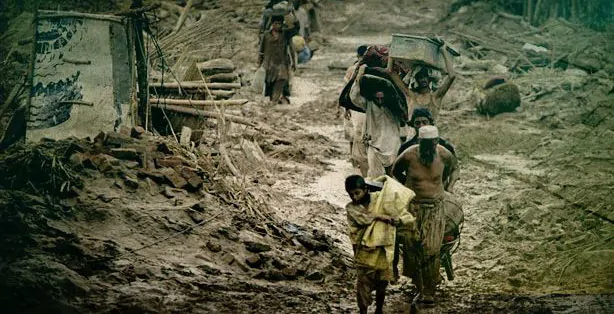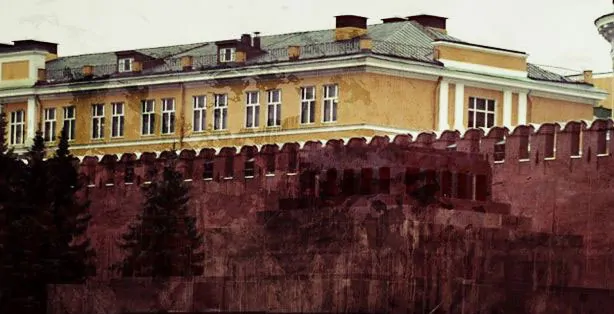
During the month of August, the worst flooding in Pakistan’s history took place, leaving millions homeless and thousands dead. But in America, the press coverage was minimal (at best). We decided to try to find out what’s happening in Pakistan, so we talked with Christophe Lobry-Boulanger, a disaster relief expert with the American Red Cross. He spoke about the current situation, what the Red Cross is doing and what the long-term plans are.
What is the situation like in Pakistan right now?
The disaster situation is evolving and getting worse. The flooding was the consequence of the monsoon, which is normal in Pakistan, but this time it was much, much worse and actually is still worsening as we speak now. Basically if you look at the situation over the past four weeks or so, the disaster has been evolving from the northern part of Pakistan to the central part of Pakistan, and now to provinces in the southern part of Pakistan. If we speak about numbers, about 18 million people are affected by these floods, which is about 10 percent of the population. [More than 1] million people have been rescued, literally, and about the same number of homes have been either destroyed and affected. In terms of casualties, I think we’re just below the 2,000 mark—1,600 or 1,700 deaths. This is the human cost, but it’s important to know that the livelihood of people is also destroyed, so this is not only lives that we’re talking about, but fields and extraordinarily vast amounts of the country. In terms of agriculture, fields and means of livelihood of people have been destroyed as well as cattle. Over a million cattle have died as a consequence of the disaster.
I was in Haiti as part of the relief efforts in February of this year, and I do find some differences and I find also some similarities. What is similar, for instance, is that both the natural disasters [are] affecting extremely poor populations. In Pakistan when you go to the countryside, those people are extremely poor. If we speak about the regions away from the urban areas, those people really have nothing to live with. And then on top of it, if you put the flood; it’s really hard to imagine the people who have survived, whether they were poor like this before the flood or as a consequence of the flood. As in Haiti, the effect on the population is even worse because those people had nothing to begin with and therefore an even less position to really respond to the disaster or even be prepared for this kind of thing.
How are the people reacting?
I think it depends [on] whether you speak about the northern part of Pakistan or the southern part of Pakistan. The waters have started to recede in the northern part of Pakistan and we can see some population trying to come back to the villages now and trying to rebuild their life. On the other hand, when you look at the villages they are coming back to, they have nothing. The landscape is destroyed and the houses and the structures are gone, and they are really starting from scratch again. In the southern part, it is really a matter of life and death and they’re trying to remain alive by watching the waters still rising, still rising, still rising.
It seems like, at least in the States, the Pakistan flooding has received little to no media coverage. What is your reaction to the minimal news reports coming out?
Actually, I haven’t been in the States for a while now, so I’m not very aware of what’s going on in the media in the States. What I can say, though, is that it is a disaster of a magnitude that should be put on a stand. The U.N. has repeatedly said, and rightfully so, [that] if you want to scale the magnitude of this one, it is bigger than the Haiti earthquake, the tsunami of 2005 and the Kashmir earthquake combined. It is enormous, affecting between 18 and 20 million people, and spanning the whole length of the country. So you can imagine the catastrophe that really spans the whole region and affecting just under 18-20 million people. It’s enormous, and the response of it is going to take months.
What is the long-term development plan for the country? Specifically, what is the Red Cross doing over the next 18 months to make sure Pakistan can get back on its feet?
Let me try to give you an answer and categorize it differently. The Pakistani Red Crescent [editor’s note: the Red Cross and Red Crescent are parts of the same whole] is basically at the center of the operation. They have already provided food items to about 66,000-67,000 families, which is just below 500,000 people, and they have provided relief supplies, non-food items, to about 29,000 families, which is just below 200,000 people. In addition to that, they provide water and sanitation to between 95 and 100,000 people. It could be restoration of wells, it could be our distribution centers to people, water-purifying tablets and so on. And then from the medical standpoint, they have, I think, 32, over 30 medical units throughout the country, which provide health services to just below 100,000 patients in the affected people.
[We are also] in the process of raising 72-72.5 million dollars, and their plan is to assist 900,000 people, which is about 137,000 families, for nine months. This is the immediate response aspect of the operation.In terms of recovery for the long-term, I know that there is a team, part of the Red Cross federation team, which is exactly addressing this question of long-term recovery and recovery of what we call livelihood. They are working on the plan that is going to be implemented for the many months to come. They are the ones, basically, which provide the transition between the response aspect of the operation, addressing the basic needs—food, water, medical needs—and the long-term needs—housing, infrastructure and livelihoods, providing assistance to people in terms of their own livelihood, for instance, with cattle, with growing again some crops which will be able to sustain their own livelihood.





















